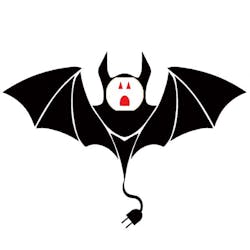Lots of little things can add up to major energy losses. The typical energy savings program looks at only the big things, such as upgrading the lighting or upgrading to energy-efficient motors. But if you also pay attention to smaller items, you could find some unexpected savings.
Another kind of drain is a built-in DC power supply that keeps power available. Check the transformer for heat after the unit has been off for a couple of hours to see if the device has this kind of energy waster.
The typical solution is to simply unplug these devices until you need them or put them on a surge strip that has a switch.
Many similar devices (and more) are in commercial and industrial settings. It’s simply not practical to expect users to go around every night unplugging these devices and then plugging them back in every morning. And surge strip solutions have their own set of problems.
Among the “more” energy wasters referred to earlier are personal space heaters and personal cooling fans.
If a facility operates on a set schedule of one or two shifts, then one solution is to provide special circuits for these devices. You can color code the receptacle covers to readily identify these circuits. Working with finished walls? Surface raceway is an excellent solution, but select a style that fits the decor.
Power to these circuits would be present only during preset hours. You can choose from a wide array of control systems for this purpose, but invest the time to determine the correct one for your particular application. And consider features such as occupancy sensors that override the preset off cycle.
Examples of equipment that may reasonably be taken out of “vampire mode” include:
• Printers. Some models already have self-shutdown, some do not.
• Copiers. Consider checking with your supplier about leasing an energy-saving model.
• Cordless phones. They don’t need to charge up all night unless they are going to routinely be used all day. Charging for an hour after quitting time and an hour before starting time should suffice.
• Breakroom appliances other than those used for storing food. The community coffee pot is perhaps the classic “left on overnight” appliance. Many other kinds of appliances (and also vending machines) have digital displays and indicator lights, and these don’t need to be on if nobody is there.
• Ethernet routers (including the wireless variety). Shutting these down (normally) flushes the memory, which is helpful. Having them off all night also reduces the vulnerability of your system over a given day.
A small office might have a few consumer-grade routers physically distributed around; feel the heat coming off each one and you’ll easily understand why shutting them down after hours saves money. A larger office may have centrally situated rack-mounted routers; check with manufacturers to determine if routine power off is advisable for the models being used.
It may be tempting to put smoke alarms on these controlled circuits, because if nobody is in the building you don’t need an alarm to tell them to get out. But some things are sacrosanct, and fire safety is one of them. Don’t introduce additional points of failure into these systems; the small amount of energy draw is an insignificant price to pay.
About the Author

Mark Lamendola
Mark is an expert in maintenance management, having racked up an impressive track record during his time working in the field. He also has extensive knowledge of, and practical expertise with, the National Electrical Code (NEC). Through his consulting business, he provides articles and training materials on electrical topics, specializing in making difficult subjects easy to understand and focusing on the practical aspects of electrical work.
Prior to starting his own business, Mark served as the Technical Editor on EC&M for six years, worked three years in nuclear maintenance, six years as a contract project engineer/project manager, three years as a systems engineer, and three years in plant maintenance management.
Mark earned an AAS degree from Rock Valley College, a BSEET from Columbia Pacific University, and an MBA from Lake Erie College. He’s also completed several related certifications over the years and even was formerly licensed as a Master Electrician. He is a Senior Member of the IEEE and past Chairman of the Kansas City Chapters of both the IEEE and the IEEE Computer Society. Mark also served as the program director for, a board member of, and webmaster of, the Midwest Chapter of the 7x24 Exchange. He has also held memberships with the following organizations: NETA, NFPA, International Association of Webmasters, and Institute of Certified Professional Managers.

